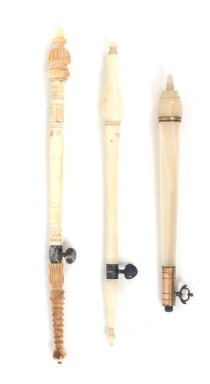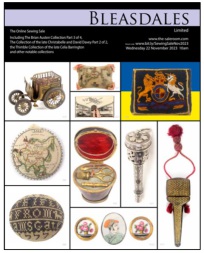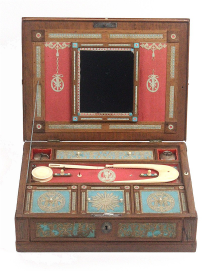
Tambour Hooks
In the 18th century embroidery with a hook was known as tambouring, because the work to be executed was stretched tightly on a frame, resembling the tensionary of a drum. The thread was drawn on a fine hook down through the material and picked up the thread held below the work in the other hand and drew it in a loop producing a chain stitch. Tambour hooks had extremely fine hooked blades and had to be protected when not in use, most therefore unscrew and reverse to be used fitting back into the handle for storage. Most common are ivory examples, but mother-of-pearl and silver were also popular. They often contain five or six variant, held into the stem by a wing nut system. Crochet work, although popular in France, was not widely introduced until the 1820s and didn't become popular until the 1850s. Hooks were often made in graduated sets and were sometimes incorporated into stands.







